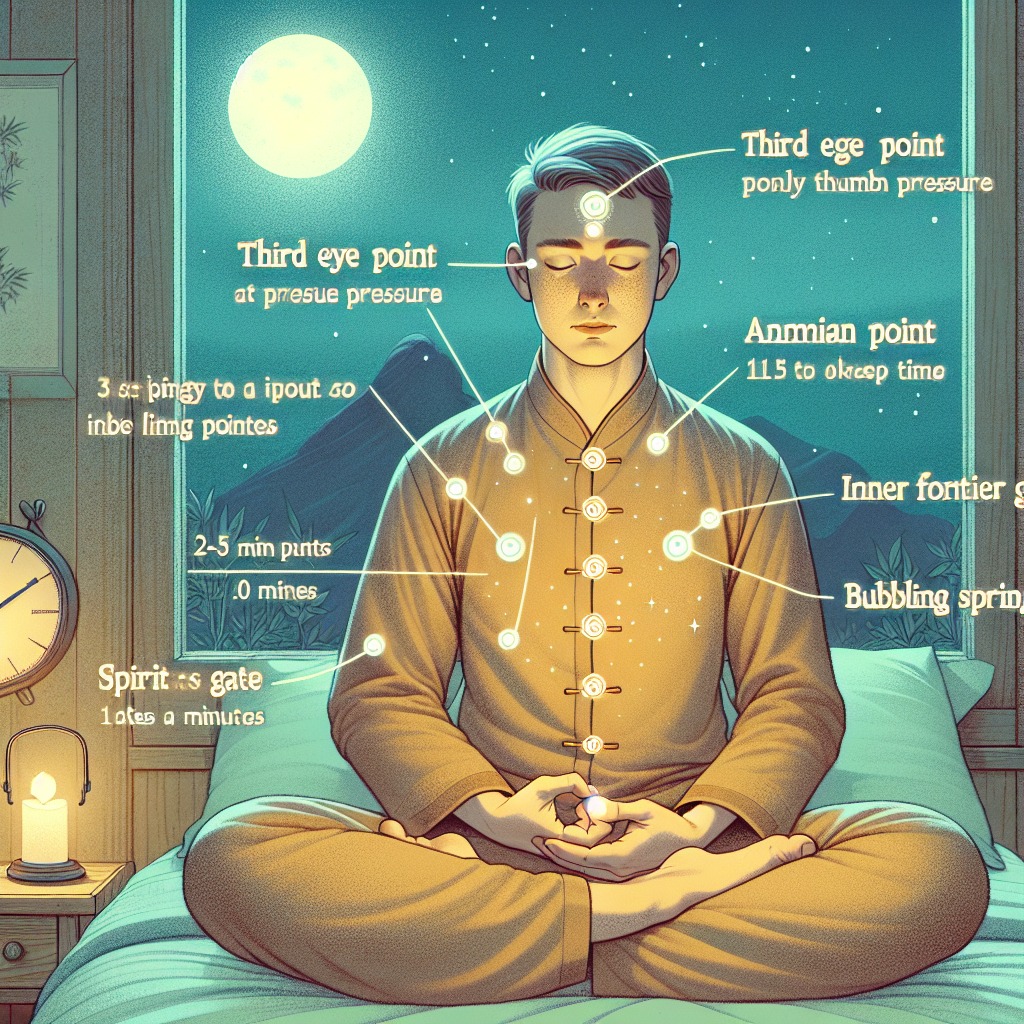
Transforming Your Sleep Quality with 10 Minutes of Acupressure.
Share
In our fast-paced, modern lives, getting quality sleep can feel like an impossible dream. Whether it’s stress, screen time, or just the noise of everyday life, many people struggle to fall asleep and wake up feeling refreshed. But what if you could improve your sleep quality dramatically with just 10 minutes of targeted acupressure? This age-old practice might just be the solution you’ve been looking for.
Acupressure, based on traditional Chinese medicine, is a therapy that involves applying gentle pressure to specific points on the body to promote balance and healing. Unlike acupuncture, which uses needles, acupressure uses only your fingers, palms, or special tools. It’s a safe, non-invasive, and surprisingly effective way to address a variety of health concerns—including sleep difficulties.
Here’s how you can improve your sleep quality using 10 minutes of acupressure before bedtime:
1. Start with the “Third Eye Point” (Yintang)
Located between your eyebrows, the Third Eye Point is a calming spot that helps relieve stress and quiet a racing mind. Using your thumb or index finger, apply gentle pressure to this point for about 1–2 minutes. Breathe deeply and evenly while focusing on relaxation.
2. Target the “Anmian” Points (Peaceful Sleep Points)
These points are located behind your ears, just at the base of your skull. To find them, place your fingers just behind the earlobes and move in a circular motion until you feel a small indentation. Using your thumbs, apply gentle circular pressure to these points for 2–3 minutes. The Anmian points are specifically associated with improving sleep and reducing insomnia.
3. Focus on the “Spirit Gate” Point (HT7)
The Spirit Gate Point is located on the inside of your wrist, in the groove near your pinky finger. This point is associated with calming the mind and reducing anxiety. Apply gentle pressure using your thumb and hold for 1–2 minutes on each wrist. This step is especially helpful if stress is keeping you awake at night.
4. Soothe the “Inner Frontier Gate” Point (PC6)
The Inner Frontier Gate Point is another powerful stress-relieving acupressure spot. Located on the inside of your forearm, about three fingers’ width below your wrist, this point is easy to access. Applying gentle, steady pressure here for 1–2 minutes on each arm can create a sense of calm and help ease your transition into a restful state.
5. Release Tension with the “Bubbling Spring” Point (KD1)
The Bubbling Spring Point is located on the sole of your foot, about one-third of the way down from the base of your toes. This grounding point is known for its ability to calm an overactive mind and body. Sit comfortably and use your thumb to press into this point for 1–2 minutes on each foot. You may notice a soothing, grounding effect that prepares your body for sleep.
6. Wrap Up with Deep Breathing
Once you’ve completed the acupressure treatment, spend a final minute focusing solely on deep, even breathing. This will enhance the effects of the acupressure by calming your nervous system further. If possible, lie down in your bed during this step to encourage a smooth transition into sleep.
The Science Behind Acupressure and Sleep
While acupressure is rooted in ancient medicine, modern research has begun to validate its effectiveness. Studies have shown that acupressure can increase levels of serotonin, a crucial neurotransmitter that regulates mood and sleep. It can also help lower cortisol levels, the stress hormone that can interfere with your ability to relax. The gentle yet targeted stimulation of acupressure points supports the body’s natural healing processes, paving the way for better sleep.
Why Just 10 Minutes?
You might wonder, why only 10 minutes? The beauty of acupressure lies in its efficiency. By targeting specific points related to relaxation, stress relief, and sleep, you’re addressing the root causes of poor sleep in a short amount of time. Even better, acupressure can be done anytime and anywhere—no special equipment or training required. This makes it an ideal addition to any pre-sleep routine.
Additional Tips for Maximizing Results
To get the most out of your acupressure practice, consider integrating the following habits into your routine:
- Limit screen time at least 30–60 minutes before bed to avoid overstimulation.
- Keep a consistent sleep schedule by going to bed and waking up at the same time every day.
- Practice mindfulness or meditation to complement the calming effects of acupressure.
- Avoid heavy meals, caffeine, and alcohol close to bedtime.
By pairing acupressure with these healthy sleep habits, you’ll create a powerful framework for improving your sleep quality and overall well-being.
Final Thoughts
Sleep is one of the most important foundations for our physical and mental health, yet it’s often neglected in our busy lives. Incorporating just 10 minutes of acupressure into your nightly routine can help you unlock the restorative power of sleep. The next time you find yourself tossing and turning, try pressing a few of these key points and feel the difference it makes.
With consistency and care, acupressure can become one of your go-to tools for a better night’s sleep—and a better quality of life.
